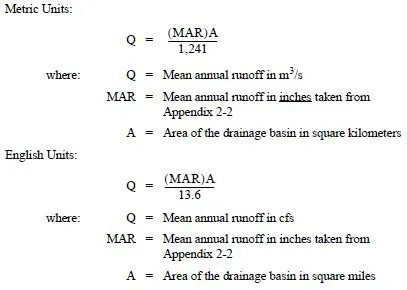The overall hydraulic design process is part of scoping, predesign, design, and construction. To allow the most efficient hydraulic report review and assessment, PEOs shall follow the hydraulic review process outlined in Section 1-5.
1-3.2.1 Hydraulic Report Content and Outline
The hydraulic report checklist identifies the required subject matter that the hydraulic report should contain. PEOs shall provide a well-organized report such that an engineer with no prior knowledge of the project could read and fully understand the hydraulic/hydrologic design decisions made for the design of the project. The report shall contain enough information to allow reproduction of the design in its entirety, but at the same time PEOs should be concise and avoid duplicate information that could create confusion. Because the software used for analysis will change over time, all assumptions and input parameters shall be clearly documented to allow the analysis to be reproduced in other software in the future, if needed.
In addition, a Type A hydraulic report outline has been developed as a starting point. Although use of the outline is not mandatory, organizing reports in the outline format may expedite the review process. Because some regions have modified the outline to meet specific regional needs or requirements, PEOs should contact their RHE to determine the correct outline before starting a report. Once the relevant outline is selected, PEOs shall read through the outline, determine which sections are applicable to the project, and delete those that are not. Either the RHE or the State Hydraulics Office can be contacted for assistance in preparing a Type A hydraulic report and for current updates to the hydraulic report outline.
The author should not copy sections of the Hydraulics Manual or Highway Runoff Manual into the hydraulic report because it would add redundant information to the report. Instead, authors should reference the relevant section and version in the hydraulic report narrative.
1-3.2.2 Deviations from the Hydraulics Manual
An author who deviates from the requirements in the Hydraulics Manual must clearly state why a deviation is necessary and document all the steps used in the analysis in a hydraulic deviation. Deviations from this manual require approval prior to submitting a hydraulic report for review. Requests for a deviation shall go through the RHE to the State Hydraulics Office engineering staff. A Hydraulic Deviation template is available on the WSDOT Hydraulics & hydrology website under the Tools, templates & links tab.
1-3.2.3 Design Tools and Software
The design tools and programs described in the Hydraulics Manual and in the Highway Runoff Manual shall be used whenever possible. To determine if software and/or a design tool is required, PEOs shall review Section 1-4 or check the expanded list on the State Hydraulics Office web page. If a PEO wishes to use a design tool or software other than those required, it must request concurrence during the 10 percent milestone timeline for the hydraulic report through the RHE.
1-3.2.4 Contract or Scope of Work for Hydraulic Support
Contact the RHE and/or State Hydraulics Office to review the contract or scope prior to hiring a consultant.
